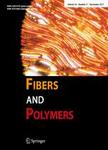版权所有:内蒙古大学图书馆 技术提供:维普资讯• 智图
内蒙古自治区呼和浩特市赛罕区大学西街235号 邮编: 010021

作者机构:Natl Inst Technol Dept Chem Engn Warangal 506004 Telangana India Indian Inst Technol Dept Chem Engn Composite Applicat Lab Kharagpur 721302 W Bengal India
出 版 物:《FIBERS AND POLYMERS》 (纤维与聚合物)
年 卷 期:2024年第25卷第6期
页 面:2285-2302页
核心收录:
学科分类:081704[工学-应用化学] 07[理学] 08[工学] 0817[工学-化学工程与技术] 070305[理学-高分子化学与物理] 080501[工学-材料物理与化学] 0805[工学-材料科学与工程(可授工学、理学学位)] 0703[理学-化学]
基 金:Extra Mural Research (EMR) Scheme of the Science & Engineering Research Board (SERB) Department of Science and Technology (DST) India [EMR/2016/005562]
主 题:Flow sensors Visualization technique Mat permeability ANFIS ANN
摘 要:The main objective of this work was to evaluate the effect of processing and material parameters on the reinforcement mat permeability through mould-filling experiments and to model the reinforcement mat permeability as a function of porosity, mat layers, test-fluid viscosity and injection pressure using machine learning (ML) techniques. Two experimental methods based on electrical sensors and visualization techniques were employed to measure the permeability through temporal flow front tracking. The fibre wetting analysis was performed using contact angle measurements to analyse the test fluid saturation at the reinforcement mats and its effect on mat permeability. Artificial neural network (ANN) and the adaptive neuro-fuzzy inference system (ANFIS) ML models were adopted to model effective permeability as a function of four input parameters using the experimental data. From the results, the order of permeability was obtained between 8 x 10-10 to 8 x 10-9 m2 for chopped strand glass-fibre mat, 8.8 x 10-10 to 8 x 10-9 m2 for jute fibre mat, 8.9 x 10-10 to 8.5 x 10-9 m2 for woven roving glass-fibre mat, and 8.9 x 10-10 to 1 x 10-8 m2 for hemp fibre mat. From the fibre wetting analysis, it was found that the mat permeability decreases with the increase in the test fluid-fibre surface wetting time. From the modelling analysis, it was found that the adopted ANN and ANFIS techniques predicted permeability values qualitatively and quantitatively with R2 values of 0.967 and 0.975, respectively. From the statistical analysis, ANFIS has shown an efficient correlation with the experimental permeability as a function of input key parameters than the ANN approach.